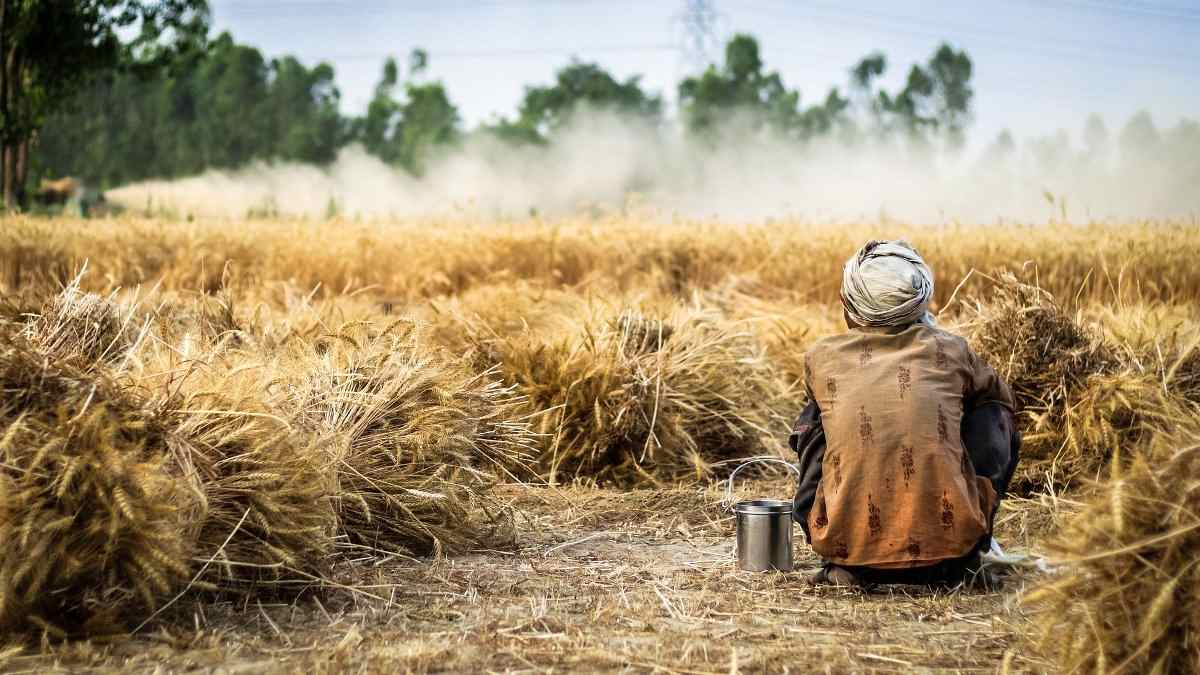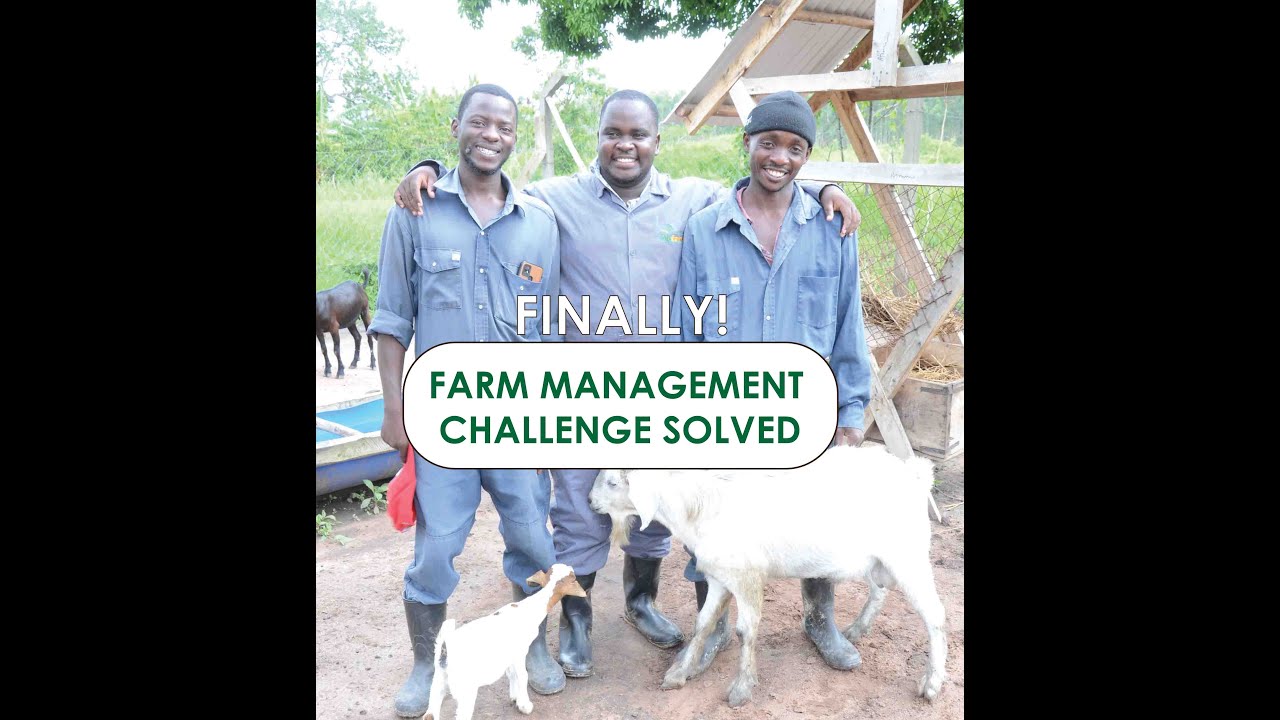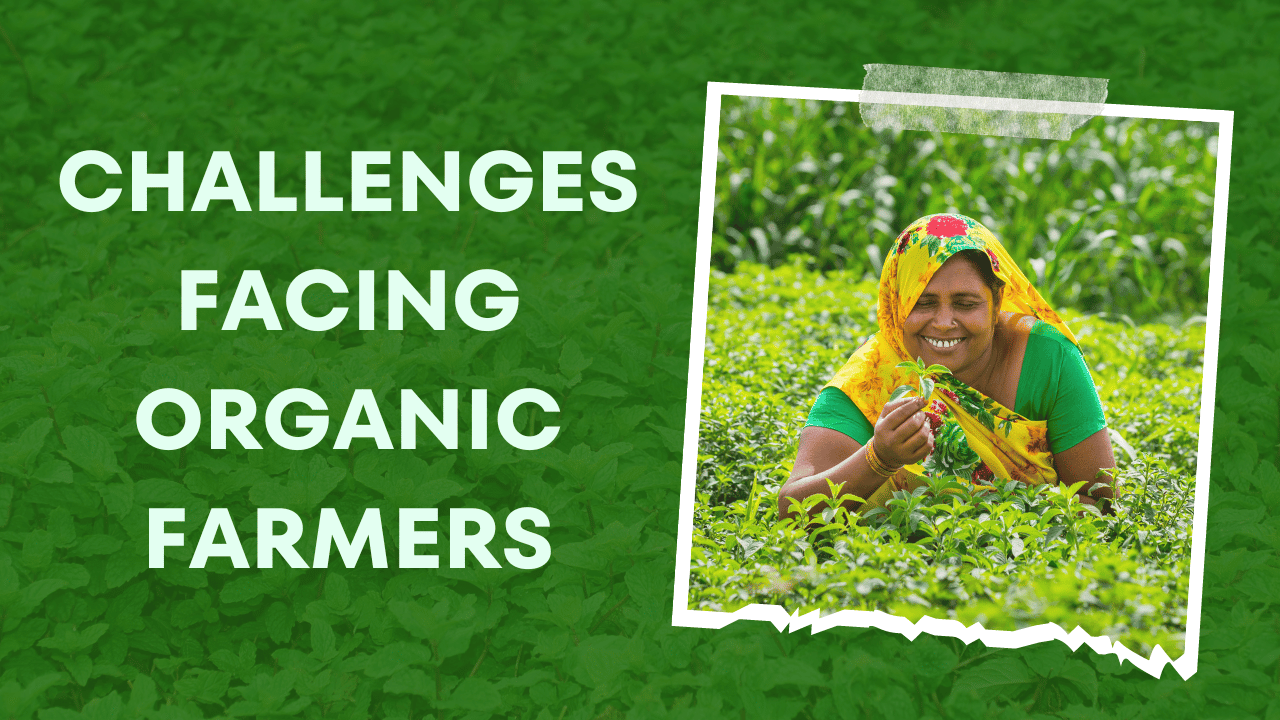Challenges and opportunities in open farm management: a phrase that sounds like the title of a thrilling agricultural heist movie, doesn’t it? Instead of masked bandits, we’re dealing with the complexities of data integration, the thrill of optimizing resources, and the suspense of navigating cybersecurity risks. This isn’t your grandpappy’s farm; it’s a high-tech, data-driven world where the potential for innovation – and the potential for spectacular failure – is equally enormous.
Buckle up, farmers, because this journey is going to be a wild ride!
This exploration delves into the multifaceted world of open farm management, examining the technological hurdles, economic prospects, environmental considerations, and social implications. We’ll investigate how open data and innovative technologies are transforming traditional farming practices, creating both exciting possibilities and significant challenges for farmers of all sizes. From optimizing resource allocation to mitigating environmental impact, we’ll uncover the key factors that will shape the future of agriculture.
Technological Challenges in Open Farm Management
The digital revolution promised a farming utopia: tractors that drive themselves, sensors that whisper crop secrets, and data that magically boosts yields. Reality, however, often resembles a slightly chaotic tech support nightmare, involving stubborn software, temperamental sensors, and the occasional existential dread when the entire system goes down during harvest. Let’s delve into the muddy boots-and-bytes reality of open farm management technology.
Limitations of Current Technologies in Open Farm Management
Current technologies, while impressive, still face significant limitations. Many precision agriculture tools require significant upfront investment, putting smaller farms at a disadvantage. The interoperability between different systems from various vendors is often poor, creating data silos and hindering holistic farm management. For example, a farmer might have a GPS-guided planter from one company, a soil sensor from another, and irrigation control software from a third, with little to no seamless communication between them.
This fragmented approach makes comprehensive data analysis difficult and reduces the potential benefits of precision agriculture. Furthermore, the reliance on reliable internet connectivity, often patchy in rural areas, presents a major hurdle for widespread adoption. Imagine a self-driving tractor losing its connection mid-field – not ideal.
Challenges Associated with Data Integration from Diverse Sources
Integrating data from various sources—sensors, drones, weather stations, farm management software—is a Herculean task. Different systems use different data formats, protocols, and units of measurement. Harmonizing this data requires significant effort and expertise, often involving custom programming and data wrangling. Imagine trying to fit square pegs (sensor data) into round holes (software interfaces) – it’s a constant battle against incompatibility.
The sheer volume of data generated also poses a challenge; effective data management and analysis require powerful computing resources and skilled personnel, which may be beyond the reach of many farms. Efficient and reliable data integration is crucial for deriving actionable insights and making informed decisions.
Effectiveness of Precision Agriculture Technologies in Diverse Farming Environments
The effectiveness of precision agriculture technologies varies significantly depending on the farming environment. A technology that works wonders in a flat, irrigated field might be completely unsuitable for a hilly, rain-fed landscape. For instance, drone-based imagery for crop monitoring is highly effective in large, open fields but less so in densely planted orchards or vineyards. Similarly, soil sensors might provide accurate data in homogenous soil conditions but less so in diverse soil types.
The adaptability and scalability of precision agriculture technologies need to be carefully considered when applied to diverse farming situations. One size definitely does not fit all in this technological farming landscape.
Cybersecurity Risks Associated with Connected Farm Equipment and Data Sharing
Connected farm equipment and data sharing introduce significant cybersecurity risks. Hackers could potentially gain control of automated machinery, disrupt operations, steal valuable data (like yield information or proprietary breeding data), or even cause physical damage. The consequences of a successful cyberattack on a farm could be devastating, leading to financial losses, environmental damage, and reputational harm. The increasing reliance on cloud-based data storage also raises concerns about data privacy and security.
Robust cybersecurity measures are essential to protect the farm’s digital assets and ensure the continuity of operations. Think of it as protecting your farm from digital bandits – a whole new level of farm security.
Hypothetical System to Address Data Security Concerns in Open Farm Management
A robust system to address data security concerns could involve a multi-layered approach. This would include: 1) Secure hardware: using encrypted devices and employing strong passwords; 2) Network security: implementing firewalls, intrusion detection systems, and regular security audits; 3) Data encryption: encrypting all sensitive data both in transit and at rest; 4) Access control: implementing role-based access control to limit access to sensitive data; and 5) Regular security updates: keeping all software and firmware up-to-date to patch vulnerabilities.
Furthermore, a decentralized data storage system, using blockchain technology, could enhance data integrity and security by making it more resistant to tampering or unauthorized access. This system should be designed with scalability and interoperability in mind, to accommodate the increasing complexity of modern farms. Think of it as building a digital fortress around your farm’s valuable data.
Economic and Financial Opportunities in Open Farm Management

Open farm management, with its emphasis on data sharing and collaboration, isn’t just a technological marvel; it’s a potential goldmine for farmers. By embracing open data and collaborative practices, farmers can unlock significant economic and financial advantages, boosting profitability and securing a more sustainable future for agriculture. This section explores the exciting financial opportunities that arise from embracing open farm management.
Successful Open Farm Management Initiatives and Improved Profitability
Several initiatives demonstrate the power of open farm management to boost the bottom line. For instance, a cooperative of dairy farmers in the Netherlands leveraged shared sensor data to optimize feeding schedules and reduce feed waste. This resulted in a 15% increase in milk production and a corresponding rise in profitability. Similarly, a group of fruit growers in California used open-source weather forecasting tools to predict frost events more accurately, minimizing crop losses and maximizing yields.
These real-world examples highlight the tangible economic benefits of collaboration and data-driven decision-making.
Optimizing Resource Allocation and Reducing Operational Costs with Open Data
Open data offers a powerful toolkit for optimizing resource allocation. By analyzing shared data on soil conditions, water availability, and pest infestations, farmers can precisely target fertilizer application, irrigation, and pest control measures. This reduces waste, lowers input costs, and minimizes the environmental impact. Imagine a scenario where farmers in a region share data on water usage – this collective intelligence can reveal areas of over-irrigation or inefficient water management, prompting collective action to conserve water and reduce operational costs.
Enhanced Market Access and Price Negotiation Power
Open farm management facilitates better market access and stronger price negotiation power. By sharing data on crop yields, quality, and market trends, farmers can collectively assess supply and demand, leading to better pricing strategies and more effective marketing efforts. A collective of farmers utilizing a shared platform can negotiate better deals with buyers, achieving fairer prices and securing more stable market access.
Open farm management? It’s a wild west of weather woes and unpredictable pests! But amidst the chaos, opportunities bloom like crazy, especially with tech-savvy solutions. Check out how millennial farmers are tackling these issues head-on, boosting yields with clever tech How millennial farmers are using technology to improve crop yields , proving that even farming can be a high-tech rodeo.
Ultimately, embracing innovation is key to navigating the challenges and maximizing the potential of open farm management.
This collaborative approach levels the playing field, empowering smaller farmers to compete more effectively in the market.
Funding Sources and Investment Opportunities in Open Farm Management Technologies
Investment in open farm management technologies is attracting significant interest from both public and private sectors. Government grants and subsidies are increasingly available to support the adoption of open data platforms and related technologies. Venture capital firms and impact investors are also actively seeking opportunities in the agri-tech space, recognizing the potential for high returns and positive social impact.
Furthermore, crowdfunding platforms provide an alternative avenue for farmers and developers to secure funding for open-source projects.
Financial Model Demonstrating Return on Investment (ROI) for Open Farm Management Practices, Challenges and opportunities in open farm management
A simplified ROI model for adopting open farm management practices could focus on cost savings and increased yields. Let’s assume a farmer invests $5,000 in an open-source precision irrigation system. This system, through data-driven optimization, reduces water usage by 10% and increases yields by 5%. If the farmer’s annual water costs are $10,000 and the value of the increased yield is $7,500, the annual savings would be $1,000 + $7,500 = $8,500.
This translates to a return on investment of 170% in the first year alone.
ROI = (Annual Savings – Initial Investment) / Initial Investment100%
This example illustrates the significant potential for rapid financial returns through the adoption of open farm management practices. Note that actual ROI will vary depending on the specific technology adopted, the scale of the operation, and prevailing market conditions.
Environmental Sustainability and Open Farm Management
Open farm management, with its emphasis on data sharing and collaborative decision-making, offers a surprisingly fertile ground for cultivating environmental sustainability. By connecting farmers, researchers, and consumers through open data platforms, we can move beyond the limitations of traditional farming and foster a more eco-conscious approach to food production. This shift towards transparency and collaboration empowers us to tackle some of agriculture’s most pressing environmental challenges.Open farm management significantly reduces agriculture’s environmental footprint through several innovative strategies.
It promotes precision farming techniques, optimizing resource use and minimizing waste. The ability to share data on soil conditions, weather patterns, and crop health allows for targeted interventions, reducing the need for excessive fertilizer and pesticide applications. Furthermore, the collaborative nature of open farm management fosters the adoption of sustainable practices like crop rotation, cover cropping, and integrated pest management, all of which contribute to healthier ecosystems and reduced pollution.
Methods for Monitoring and Managing Environmental Impact
Open data and technologies provide powerful tools for monitoring and managing the environmental impact of farming practices. Remote sensing technologies, such as satellite imagery and drones, provide detailed information on crop health, soil moisture, and irrigation efficiency. This data, made accessible through open platforms, allows farmers to make informed decisions about resource allocation, minimizing water and fertilizer waste.
Sensors embedded in the soil or attached to equipment can provide real-time data on various environmental parameters, enabling precise adjustments to farming practices and enhancing overall efficiency. Data analysis tools can identify trends and patterns, allowing for proactive management of environmental risks and the identification of areas for improvement. The transparency afforded by open data platforms enables independent verification and validation of environmental performance claims.
Comparison of Conventional and Open Farm Management Sustainability
Conventional farming practices often rely on intensive inputs, leading to higher levels of environmental degradation. Excessive use of fertilizers and pesticides contaminates water sources and harms biodiversity. Monoculture farming depletes soil nutrients and increases susceptibility to pests and diseases. In contrast, open farm management promotes a more holistic and sustainable approach. By sharing data and collaborating with others, farmers can adopt more efficient and environmentally friendly practices, leading to reduced environmental impact.
For example, precision farming techniques enabled by open data reduce fertilizer use by 20-30%, and optimized irrigation practices save significant amounts of water, reducing the strain on water resources. The collaborative nature of open farm management also fosters innovation and the adoption of best practices, leading to continuous improvement in environmental performance.
The Role of Open Data in Sustainable Water and Fertilizer Management
Open data plays a crucial role in promoting sustainable water and fertilizer management. By sharing data on soil conditions, weather patterns, and crop needs, farmers can optimize irrigation schedules and fertilizer application rates. This reduces water waste and minimizes the risk of nutrient runoff, protecting water quality and reducing the environmental impact of fertilizer use. Open data platforms can also facilitate the sharing of best practices for water and fertilizer management, enabling farmers to learn from each other and adopt more efficient and sustainable techniques.
Real-time data on soil moisture and nutrient levels allows for targeted interventions, ensuring that resources are used only when and where they are needed. This precision approach reduces waste and minimizes the environmental footprint of agriculture.
Framework for Evaluating Environmental Performance
A robust framework for evaluating the environmental performance of open farm management systems is crucial for tracking progress and identifying areas for improvement. The following table Artikels key metrics, measurement methods, target values, and achieved values (hypothetical examples for illustration):
| Metric | Measurement Method | Target Value | Achieved Value |
|---|---|---|---|
| Water Use Efficiency (liters/kg of produce) | Monitoring irrigation systems and crop yields | 500 liters/kg | 450 liters/kg |
| Fertilizer Use (kg/ha) | Tracking fertilizer application and soil analysis | 150 kg/ha | 120 kg/ha |
| Greenhouse Gas Emissions (kg CO2e/ha) | Life cycle assessment and data from farm management systems | 5000 kg CO2e/ha | 4000 kg CO2e/ha |
| Biodiversity Index (species richness) | Species surveys and habitat assessments | Increase by 15% | Increase by 10% |
Social and Community Aspects of Open Farm Management

Open farm management, while brimming with technological promise, ultimately hinges on the human element. Its success isn’t just about sensors and software; it’s about fostering collaboration, building trust, and ensuring equitable access within farming communities. This section delves into the social and community dynamics that shape the adoption and impact of open farm management practices.
Knowledge Sharing and Collaboration in Farming Communities
Effective knowledge sharing is the lifeblood of any successful community endeavor, and open farm management is no exception. Challenges include overcoming ingrained skepticism towards new technologies, bridging the digital divide between tech-savvy and less technologically inclined farmers, and establishing reliable channels for information exchange. Opportunities abound, however, in leveraging the collective wisdom of experienced farmers, accelerating the adoption of best practices, and fostering a sense of shared ownership in agricultural innovation.
Successful knowledge sharing fosters resilience and adaptability within farming communities, allowing them to navigate the ever-changing landscape of agriculture more effectively. This collaborative spirit can lead to the development of locally adapted solutions and the creation of a more robust and sustainable agricultural system.
Examples of Successful Community-Based Open Farm Management Initiatives
Several initiatives demonstrate the power of community-based open farm management. For example, imagine a network of smallholder farmers in a remote region using a shared, open-source platform to monitor soil conditions, share weather data, and coordinate planting schedules. This collaborative approach reduces individual risk, optimizes resource use, and strengthens community bonds. Another example could be a farmer cooperative utilizing open-source software to track livestock health, analyze market trends, and collectively negotiate better prices for their produce.
Open farm management? It’s a wild west of weather woes and unpredictable yields, but hey, at least the views are amazing! Smart farmers are finding innovative solutions, and a big part of that involves clever marketing – check out how How millennial farmers are using social media to market their products are conquering the digital marketplace.
This savvy approach directly tackles the challenge of connecting with consumers and building sustainable businesses in the face of open farm management’s inherent unpredictability.
These examples showcase how open farm management can empower communities, fostering economic resilience and promoting social cohesion. The success of these initiatives highlights the importance of trust, transparency, and shared decision-making in building sustainable agricultural systems.
Promoting Inclusivity and Equitable Access to Open Farm Management Technologies and Data
Ensuring equitable access to open farm management technologies and data is crucial for realizing its full potential. Challenges include the cost of technology, digital literacy disparities, and the potential for marginalization of farmers with limited resources or technological skills. Opportunities exist in developing user-friendly interfaces, providing training and support, and creating accessible platforms that cater to diverse needs and levels of technological proficiency.
Initiatives focusing on digital literacy training, subsidized access to technology, and the development of culturally appropriate tools can bridge the digital divide and ensure that the benefits of open farm management are shared by all members of the farming community. This inclusive approach will lead to a more just and equitable agricultural landscape.
Barriers to Adoption of Open Farm Management Practices by Smallholder Farmers
Smallholder farmers often face unique challenges in adopting open farm management practices. These include limited access to reliable internet connectivity, lack of digital literacy, high initial investment costs for technology, and concerns about data security and privacy. Furthermore, the complexity of some open-source platforms can be a barrier, and a lack of local support and training can hinder adoption.
Addressing these barriers requires targeted interventions, including improved infrastructure, affordable technology options, accessible training programs, and culturally sensitive support systems. Overcoming these obstacles is essential for ensuring that the benefits of open farm management reach the most vulnerable members of the farming community.
Building Community Trust and Engagement in Open Farm Management Projects
Building trust and engagement is paramount for the successful implementation of open farm management projects. A strategic plan should include the following steps:
- Establish clear communication channels: Regular town halls, workshops, and online forums to keep farmers informed and address their concerns.
- Prioritize community participation: Involve farmers in the design and implementation of projects, ensuring their needs and priorities are considered.
- Demonstrate tangible benefits: Showcase successful case studies and quantify the economic and social returns of open farm management.
- Address data privacy concerns: Develop transparent data governance policies that protect farmer information and build trust.
- Provide ongoing support and training: Offer technical assistance, troubleshooting, and capacity-building opportunities to farmers.
- Foster a sense of community ownership: Encourage collaboration and knowledge sharing among farmers through peer-to-peer learning and networking opportunities.
By implementing these steps, projects can cultivate a supportive environment where farmers feel empowered to embrace and benefit from open farm management practices.
Data Management and Interoperability in Open Farm Management

The digital revolution has swept through nearly every industry, and agriculture is no exception. Open farm management, with its promise of increased efficiency and sustainability, relies heavily on the seamless flow of data. However, the reality is often a tangled mess of incompatible systems, proprietary formats, and siloed information – a digital farmyard where the chickens can’t talk to the cows.
This section explores the challenges and opportunities presented by data management and interoperability in this exciting, albeit sometimes chaotic, field.
Challenges of Data Standardization and Interoperability
Achieving true interoperability in open farm management systems presents significant hurdles. Different sensors, software applications, and data storage methods often use unique formats and protocols. Imagine trying to combine data from a soil moisture sensor that speaks “SensorSpeak,” a weather station using “WeatherWare,” and a farm management software running on “AgriCode.” The result? A digital Tower of Babel, leaving farmers struggling to make sense of their data.
Lack of standardized data formats prevents easy integration and analysis, hindering the development of comprehensive farm management strategies. Furthermore, the sheer volume and variety of data generated on a modern farm can be overwhelming, requiring robust and scalable data management solutions.
Benefits of Open Data Standards and Protocols
The adoption of open data standards and protocols offers a pathway to resolving the interoperability crisis. Using common formats and communication methods allows different systems to exchange information seamlessly. This enables farmers to integrate data from diverse sources, providing a holistic view of their operations. Open standards promote competition and innovation, fostering the development of new applications and services that leverage farm data.
For example, a farmer could use open data to integrate soil analysis data with weather forecasts to optimize irrigation scheduling, potentially saving water and energy while improving crop yields. The overall effect is a more efficient, data-driven approach to farming.
Comparison of Data Management Approaches
Farmers have a choice between cloud-based and on-premise data management solutions. Cloud-based systems offer scalability, accessibility, and automatic backups, eliminating the need for significant upfront investment in hardware and IT infrastructure. However, reliance on internet connectivity and concerns about data security and privacy are potential drawbacks. On-premise solutions provide greater control over data and offer better security in some cases, but require substantial investment in hardware, software, and skilled personnel for maintenance and upgrades.
The best approach depends on the size and complexity of the farm operation, the level of technical expertise available, and the farmer’s risk tolerance regarding data security and availability. A hybrid approach, combining aspects of both, might also be considered.
Importance of Data Governance and Privacy
Data governance is crucial for ensuring the quality, integrity, and security of farm data. This involves establishing clear policies and procedures for data collection, storage, access, and usage. Equally important is the protection of farmer privacy. Open farm management systems often collect sensitive information about farm operations, environmental conditions, and potentially even personal data. Robust data security measures, including encryption, access controls, and regular audits, are essential to prevent unauthorized access and data breaches.
Compliance with relevant data protection regulations is also paramount. A well-defined data governance framework builds trust and fosters collaboration within the agricultural community.
Data Architecture for an Open Farm Management System
A scalable and secure data architecture for an open farm management system would utilize a layered approach. At the bottom, various sensors and devices (soil moisture sensors, weather stations, GPS trackers on machinery) would collect raw data. This data would then be transmitted to a central data processing layer, possibly using a message queue system for efficient handling of large volumes of data.
The processing layer would perform data cleaning, transformation, and validation, ensuring data quality. A data storage layer, potentially using a distributed database system like Cassandra or MongoDB for scalability and fault tolerance, would store the processed data. Finally, a user interface layer would provide farmers with access to the data through dashboards, reports, and analytical tools. Security measures, including encryption at rest and in transit, access control lists, and regular security audits, would be implemented throughout the entire architecture.
This layered approach allows for flexibility, scalability, and maintainability, adapting to the ever-growing needs of modern open farm management.
Concluding Remarks: Challenges And Opportunities In Open Farm Management

So, there you have it: the thrilling, sometimes terrifying, always fascinating world of open farm management. While the challenges are real (and sometimes involve rogue algorithms and data breaches), the opportunities are even more significant. By embracing open data, collaborating effectively, and navigating the technological landscape with savvy, farmers can unlock unprecedented levels of efficiency, sustainability, and profitability.
The future of farming is here, and it’s digital, connected, and potentially incredibly rewarding. Let’s get farming!
